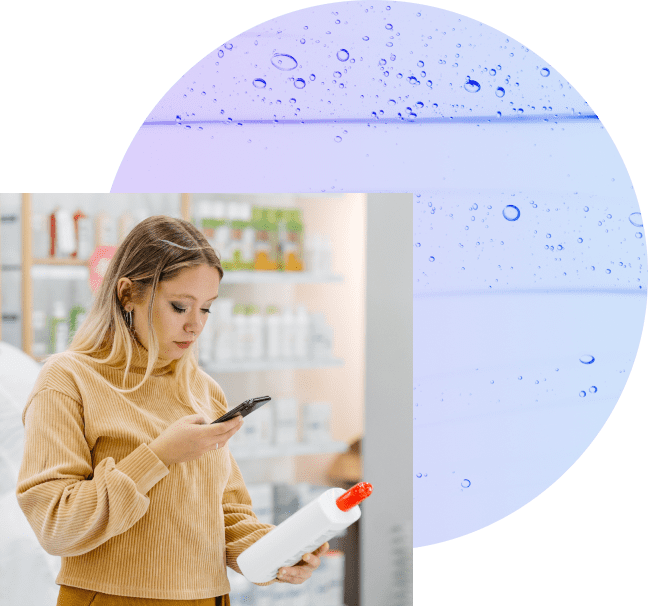Data Availability:
Limited
R+CO TELEPORT Flexible Control Hydra Gelee

WHERE TO BUY
Ingredient concerns
See how this product scores for common concerns.
-
LOWCancer
-
HIGHAllergies & Immunotoxicity
-
LOWDevelopmental and Reproductive Toxicity
-
HIGHUse Restrictions
Ingredient scores
Ingredients are scored based on their formulation and concentration in this product. Click on an ingredient for more information.
|
WATER
Data Availability: Robust
|
|
|||||||
|
||||||||
|
GLYCERIN
Data Availability: Fair
|
|
|||||||
|
||||||||
|
Heptyl Glucoside
Data Availability: Limited
|
|
|||||||
|
||||||||
|
VP/ VA COPOLYMER
Data Availability: Fair
|
|
|||||||
|
||||||||
|
PROPANEDIOL
Data Availability: Fair
|
|
|||||||
|
||||||||
|
PHENOXYETHANOL
Data Availability: Good
|
|
|||||||
|
||||||||
|
ACRYLATES/ C10-30 ALKYL ACRYLATE CROSSPOLYMER
Data Availability: Limited
|
|
|||||||
|
||||||||
|
SOLANUM TUBEROSUM (POTATO) STARCH
Data Availability: Limited
|
|
|||||||
|
||||||||
|
FRAGRANCE
Data Availability: Fair
|
|
|||||||
|
||||||||
|
PANTHENOL
Data Availability: Limited
|
|
|||||||
|
||||||||
|
SODIUM HYDROXIDE
Data Availability: Good
|
|
|||||||
|
||||||||
|
AMP-ACRYLATES/ ALLYL METHACRYLATE COPOLYMER
Data Availability: Limited
|
|
|||||||
|
||||||||
|
ETHYLHEXYLGLYCERIN
Data Availability: Limited
|
|
|||||||
|
||||||||
|
TETRASODIUM GLUTAMATE DIACETATE
Data Availability: Limited
|
|
|||||||
|
||||||||
|
BAMBUSA VULGARIS (BAMBOO) EXTRACT
Data Availability: Fair
|
|
|||||||
|
||||||||
|
HEPTANOL
Data Availability: Limited
|
|
|||||||
|
||||||||
|
LAURTRIMONIUM CHLORIDE
Data Availability: Good
|
|
|||||||
|
||||||||
|
SODIUM BISULFITE
Data Availability: Fair
|
|
|||||||
|
||||||||
|
ANANAS SATIVUS (PINEAPPLE) FRUIT EXTRACT
Data Availability: Limited
|
|
|||||||
|
||||||||
|
LEUCONOSTOC/ RADISH ROOT FERMENT FILTRATE
Data Availability: None
|
|
|||||||
|
||||||||
|
TOCOPHEROL
Data Availability: Fair
|
|
|||||||
|
||||||||
|
SODIUM GLYCOLATE
Data Availability: Limited
|
|
|||||||
|
||||||||
|
SODIUM FORMATE
Data Availability: Fair
|
|
|||||||
|
||||||||
|
POTASSIUM SORBATE
Data Availability: Limited
|
|
|||||||
|
||||||||
|
SODIUM BENZOATE
Data Availability: Fair
|
|
|||||||
|
||||||||
|
LIMONENE
Data Availability: Good
|
|
|||||||
|
||||||||
|
CITRAL
Data Availability: Limited
|
|
|||||||
|
||||||||
Ingredients from packaging:
Water (Aqua/Eau), Glycerin, Heptyl Glucoside, VP/VA Copolymer, Propanediol, Phenoxyethanol, Acrylates/C10-30 Alkyl Acrylate Crosspolymer, Solanum Tuberosum (Potato) Starch, Fragrance (Parfum), Panthenol, Sodium Hydroxide, AMP-Acrylates/Allyl Methacrylate Copolymer, Ethylhexylglycerin, Tetrasodium Glutamate Diacetate, Bambusa Vulgaris Extract, Heptanol, Laurtrimonium Chloride, Sodium Bisulfite, Ananas Sativus (Pineapple) Fruit Extract, Leuconostoc/Radish Root Ferment Filtrate, Tocopherol, Sodium Glycolate, Sodium Formate, Potassium Sorbate, Sodium Benzoate, Limonene, Citral
Product's animal testing policies
Some cosmetics companies have taken People for the Ethical Treatment of Animals and Leaping Bunny animal-testing pledges. For consumers who are concerned about companies’ policies on animal testing, Skin Deep reports this information.
Unknown
Leading international certifiers PETA and Leaping Bunny have no information concerning this company’s use of animal testing.
Understanding scores
Cosmetics and personal care products are not required to be tested for safety before being allowed on the market. The Skin Deep® scoring system was designed to help the public understand whether a product is safe to use or whether it contains ingredients of concern.
Every product and ingredient in Skin Deep gets a two-part score – one for hazard and one for data availability. The safest products score well by both measures, with a low hazard rating and a fair or better data availability rating.
HOW WE DETERMINE SCORES
Hazard score
The Skin Deep ingredient hazard score, from 1 to 10, reflects known and suspected hazards linked to the ingredients. The EWG Verified® mark means a product meets EWG’s strictest criteria for transparency and health.
Data availability
The Skin Deep data availability rating reflects the number of scientific studies about the product or ingredient in the published scientific literature.














